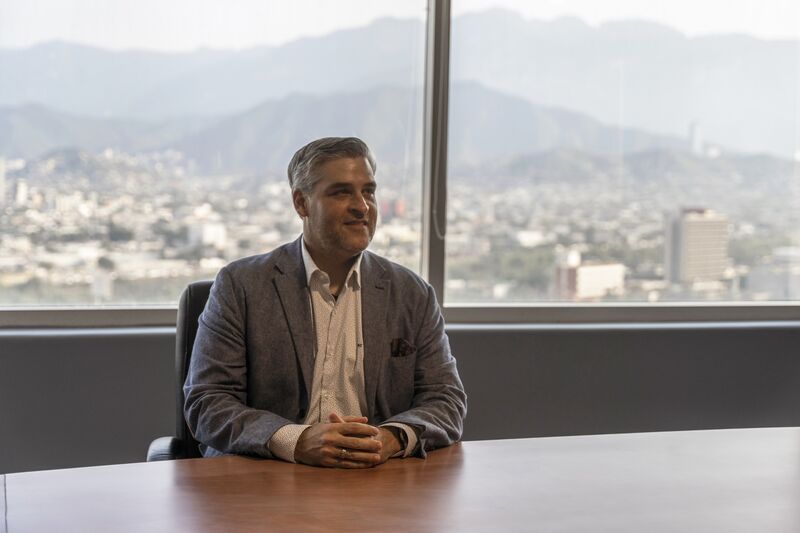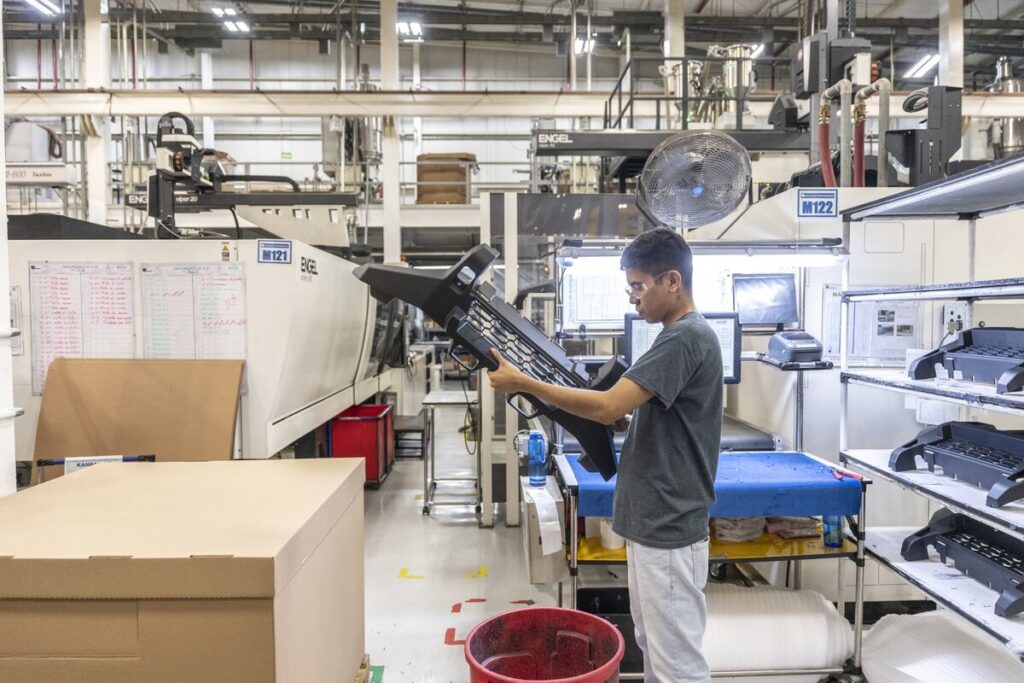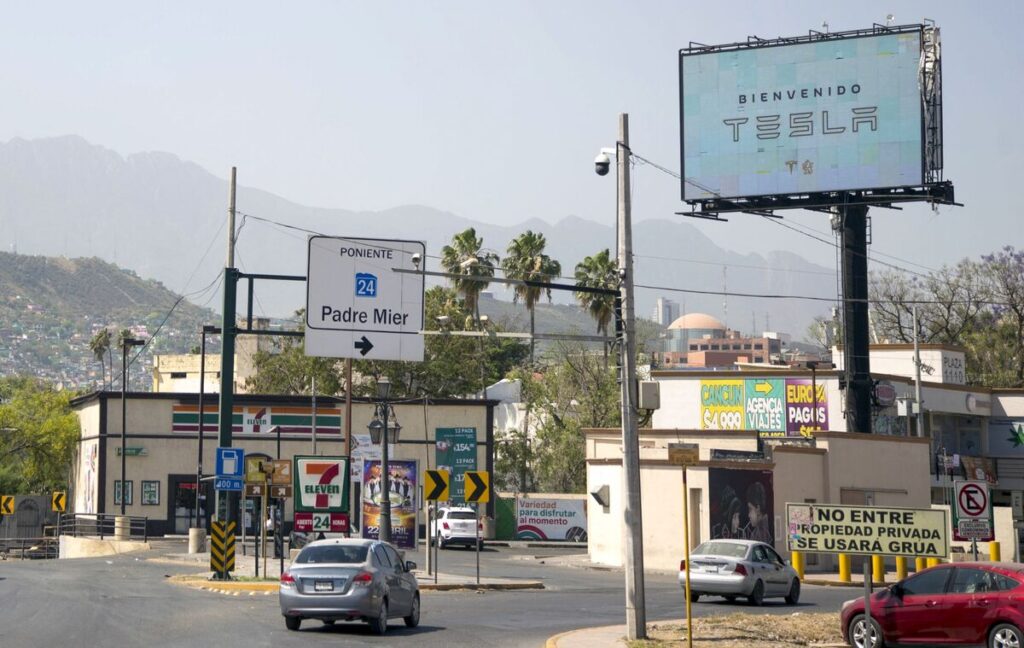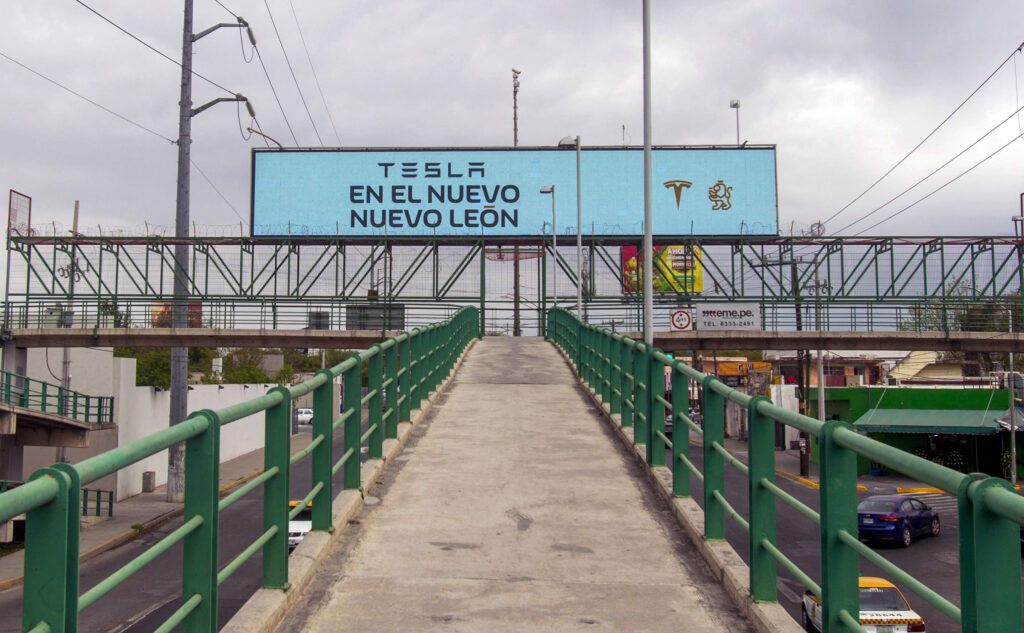The emerging Cold War presents Mexico with a significant business opportunity, positioning it favorably among nations to capitalize on shifting global trade dynamics.
With US-China tensions reshaping international trade, the US is actively seeking to reduce its supply-chain dependency on geopolitical adversaries while sourcing imports closer to home. Mexico aligns with both objectives, leading to its recent overtaking of China as the largest supplier of goods to its neighboring giant customer, the United States.
In addition to its burgeoning exports, Mexico boasts the world’s strongest currency this year and one of the most robust stock markets. Foreign direct investment has surged by over 40% in 2023, preceding even the commencement of Tesla Inc.’s proposed $5 billion factory construction. Not since the North American Free Trade Agreement (NAFTA) in the 1990s has Mexico held such appeal for investors.
Nevertheless, Mexico has a history of missing pivotal opportunities. Despite a trade deal with the world’s largest economy and significant foreign investment, Mexico has struggled to break out of a cycle of slow growth. Since NAFTA’s implementation in 1994, Mexico’s average annual growth has hovered around 2%, significantly below the benchmark for developing economies, and insufficient to alleviate widespread poverty. Countries like Turkey, Malaysia, and Poland, once poorer than Mexico, have since surpassed it in wealth.
Despite its current momentum, Mexico faces various obstacles that could derail its economic boom. President Andrés Manuel López Obrador’s government has clashed with business interests while aiming to strengthen the state’s economic intervention. Mexican companies remain hesitant to borrow and invest, hindering the transformation of growth spurts into sustained economic development. Moreover, Mexico confronts fierce competition from nations like Vietnam in vying to replace China as a key US supplier.
Furthermore, existing investments strain Mexico’s infrastructure, exacerbated by challenges such as inconsistent power transmission, limited industrial space, and water scarcity.
Pedro Campa Eliopulos, a tech executive in Monterrey’s northern industrial hub, offers firsthand insight into Mexico’s potential for growth and the obstacles it faces.

Pedro Campa Eliopulos, former vice-president of manufacturing operations at Quanta Computer in Monterrey, Mexico. Photographer: Alejandro Cegarra/Bloomberg
Two years ago, as Tesla prepared to establish a factory in Texas, it sought a nearby supplier for the crucial components of its electric vehicles—the advanced computer systems facilitating autonomous driving by connecting to satellites. Taiwan-based Quanta Computer Inc., Campa’s former employer, swiftly responded to the demand, setting up production at a plant in Monterrey, the capital of Nuevo León state. “We began outfitting the building by August, and by December, we were in full production,” he recalls. Soon, Tesla itself will become a neighbor, as construction of the Monterrey Gigafactory is slated to commence this year.
Campa recounts the plant’s struggles with recurrent power blackouts, which significantly hindered productivity due to the city’s electrical grid struggling to keep pace with its burgeoning industries. During such challenges, he reflects on Mexico’s prospects, expressing concerns that “much of nearshoring will go elsewhere—because we don’t have the capacity to receive it.”
Despite these challenges, certain regions of Mexico resemble bustling industrial hubs. In Monterrey, construction dust fills the air as new plants emerge, with warehouses sold even before their ceilings and doors are installed. Industrial space has expanded by 30% since 2019, according to real estate advisor CBRE.
This surge is partly driven by the rush to supply components for Tesla. Companies like AGP Group, manufacturing windshields, China’s DSBJ producing electronics parts, and Italy’s Brembo SpA crafting brakes, are all establishing or expanding their presence in the region.

Iván Rivas Rodríguez, the economy minister of Nuevo León Photographer: Alejandro Cegarra/Bloomberg
In the wake of Tesla’s announcement to construct factories in Texas and Nuevo León, over 30 companies have relocated to Nuevo León, according to Iván Rivas Rodríguez, the state’s economy minister. Rivas explains, “It was a request from Tesla to its suppliers, telling them ‘You have to come to North America,'” emphasizing his role in ensuring these deals materialize.
While Tesla’s influence is significant, the surge in investment extends beyond the automaker. Other major car manufacturers like General Motors, Kia Motors, and BMW have also unveiled electric vehicle investments in Mexico since the beginning of 2021. Additionally, electronics and home appliance manufacturers are expanding operations in the central region, while across the border from California, the aerospace and plastics industries are experiencing growth.
Industrial parks are quickly reaching capacity, with nationwide vacancies dropping to 2.1% last year, as reported by the Mexican Association of Private Industrial Parks. Securing a lease in Monterrey now typically demands a 10-year commitment, with approximately three-quarters of renters being foreign companies. Moreover, a survey by Spanish bank BBVA revealed that one in five new arrivals are Chinese businesses seeking to circumvent US tariffs.
Industrial real estate developer Corporación Inmobiliaria Vesta SAB raised nearly $450 million in a US initial public offering in July, marking the largest IPO by a Mexican company in over a decade. The firm is accelerating a $1.1 billion pipeline of projects in response to increased demand from nearshoring. Prologis Property Mexico SA and its parent company are also planning a $1.2 billion investment in warehouses and land.
Local landowners are among the beneficiaries of this economic boom. José María Garza De Silva, representing the third generation of his family at developer Grupo GP, remarks on the sudden influx of opportunities after years of anticipation. Grupo GP, a stakeholder in Monterrey’s largest industrial park, traces its early projects to housing developments and the city’s inaugural shopping mall.
However, the growth in Nuevo León faces constraints imposed by its natural resources. A drought last year resulted in nearly empty reservoirs and left thousands of residents without water. Local industries had to accept a reduced share of the state’s water supply, prompting the government to expedite the construction of a new aqueduct to address Monterrey’s water needs.

A demonstrator carries a sign protesting a lack of electricity in homes in Monterrey; Last year, residents lined up to fill containers with clean water during a shortage. Photographers: Mauricio Palos/Bloomberg; Marian Carrasquero/Bloomberg
The prospect of increased domestic investment raises important questions about the potential for broader distribution of the benefits from the nearshoring boom and the possibility of accelerating economic growth. Without significant domestic investment, some economists argue that Mexico may become more reliant on importing components for export assembly, resulting in minimal value added domestically.
Banco Base SA, a prominent lender in northern Mexico, has witnessed a remarkable 75% expansion in its loan portfolio over the past five years. Gabriela Siller, the bank’s director of economic analysis, attributes this growth in part to renewed interest in exporting to the US. However, she expresses concern that Mexico isn’t fully capitalizing on the current surge in investment.
Siller emphasizes, “Nearshoring presents an opportunity in Mexico, one that we’re not fully leveraging.” She points to factors such as high interest rates and a pervasive informal economy, which have hindered smaller businesses from utilizing credit to expand. “Many companies are hesitant to take risks, especially local ones more so than foreign ones.” Moreover, the available investment tends to be concentrated in select regions like Nuevo León.

A US manufacturing company, EVCO Plastics, has a subsidiary in Monterrey run by a family that first founded its own local plastics business. Photographer: Alejandro Cegarra/Bloomberg
Similar dynamics unfolded under Nafta, and it’s precisely the outcome López Obrador aims to avoid this time.
As he enters his final year in office, the popular president, known as AMLO, seeks to position his Morena party favorably for the upcoming elections next summer.
“We aim to foster more balanced growth in Mexico,” said AMLO, hailing from the relatively impoverished southern state of Tabasco, during an April press briefing. He has frequently cited issues like the water scarcity in places such as Nuevo León as consequences of lopsided economic and population growth.
López Obrador has been perceived as anti-business, attempting to limit the involvement of foreign companies in Mexico’s energy markets and recently deploying troops to nationalize a privately operated railway line, before reaching an agreement with its billionaire owner. Nonetheless, he actively engaged in discussions with Elon Musk regarding Tesla’s investment and has expressed openness to job-generating foreign enterprises, advocating for their more equitable distribution across the nation.
The leading contenders in next year’s presidential election vow to continue focusing on the development of the south. Claudia Sheinbaum, AMLO’s protegee, pledges to advance many of his initiatives. Xóchitl Gálvez, a businesswoman and senator, the primary opposition candidate, advocates for directing more investment into renewable energy and enhancing training opportunities for women to bolster the country’s technical workforce.
Mexico gained prominence in global manufacturing with the advent of maquilas—factories that emerged as early as the 1960s, primarily along the US border. This model of assembly-line production, reliant on low-wage labor, proved profitable. While Nafta bolstered exports and spurred the growth of northern cities like Monterrey, it also facilitated a surge in imports of US-grown corn and other foods, rendering small-scale farming less viable. Consequently, rural Mexico witnessed depopulation, exacerbating the wealth disparity between the northern and southern regions.

A billboard welcoming the American electric car maker Tesla in Monterrey. Photographer: Julio Cesar Aguilar/AFP/Getty Images
López Obrador is known for his stringent control over public finances, but he has made an exception for public investments aimed at bridging the development gap in the southern regions of Mexico. Among the ongoing projects is the ambitious Interoceanic Corridor, a rail link connecting the Gulf of Mexico to the Pacific, envisioned to be adorned with industrial parks and potentially rivaling the Panama Canal.
However, from an investor’s perspective, the challenge lies in the distance of these locations from the United States. Mauricio Garza, director of Nuevo León’s largest industrial park, emphasizes to potential clients that they can reach a border-crossing within three hours without encountering a single red light.
According to Gerardo Esquivel, a former deputy chief of Mexico’s central bank, Mexico’s appeal to global businesses stems from its geography and the free trade agreement with the US. “The reason they turn and look at Mexico, and that Mexico is attractive, is that it’s already integrated into the United States,” he explains. He anticipates increased investment flows into Mexico, even without significant policy changes.
Esquivel remains optimistic about the potential economic boost from nearshoring, suggesting that it could contribute up to 0.7 percentage points to the GDP annually. “It seems little, but it’s not, considering that we grow 2% per year,’’ he notes. “Going up to 2.7% or 3% a year would be great.”

